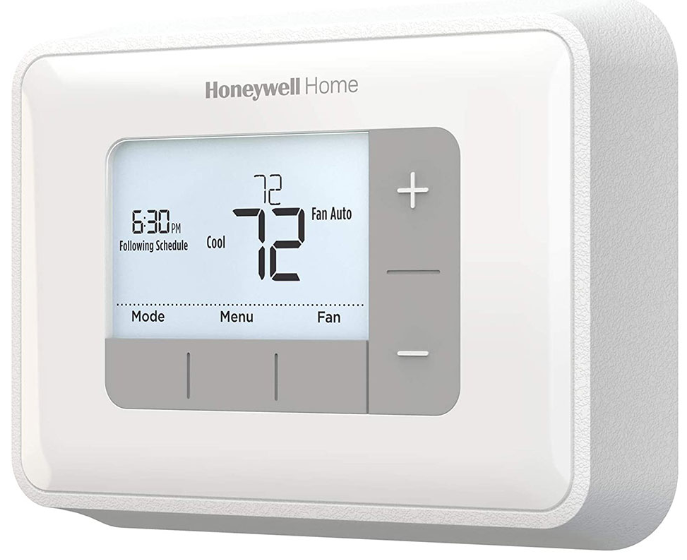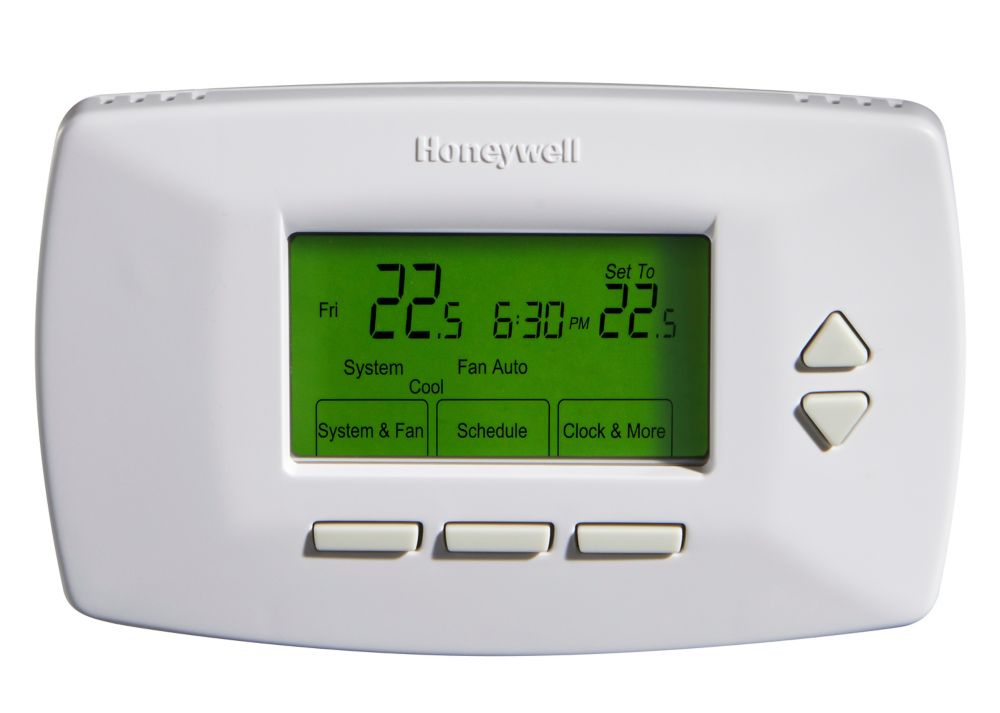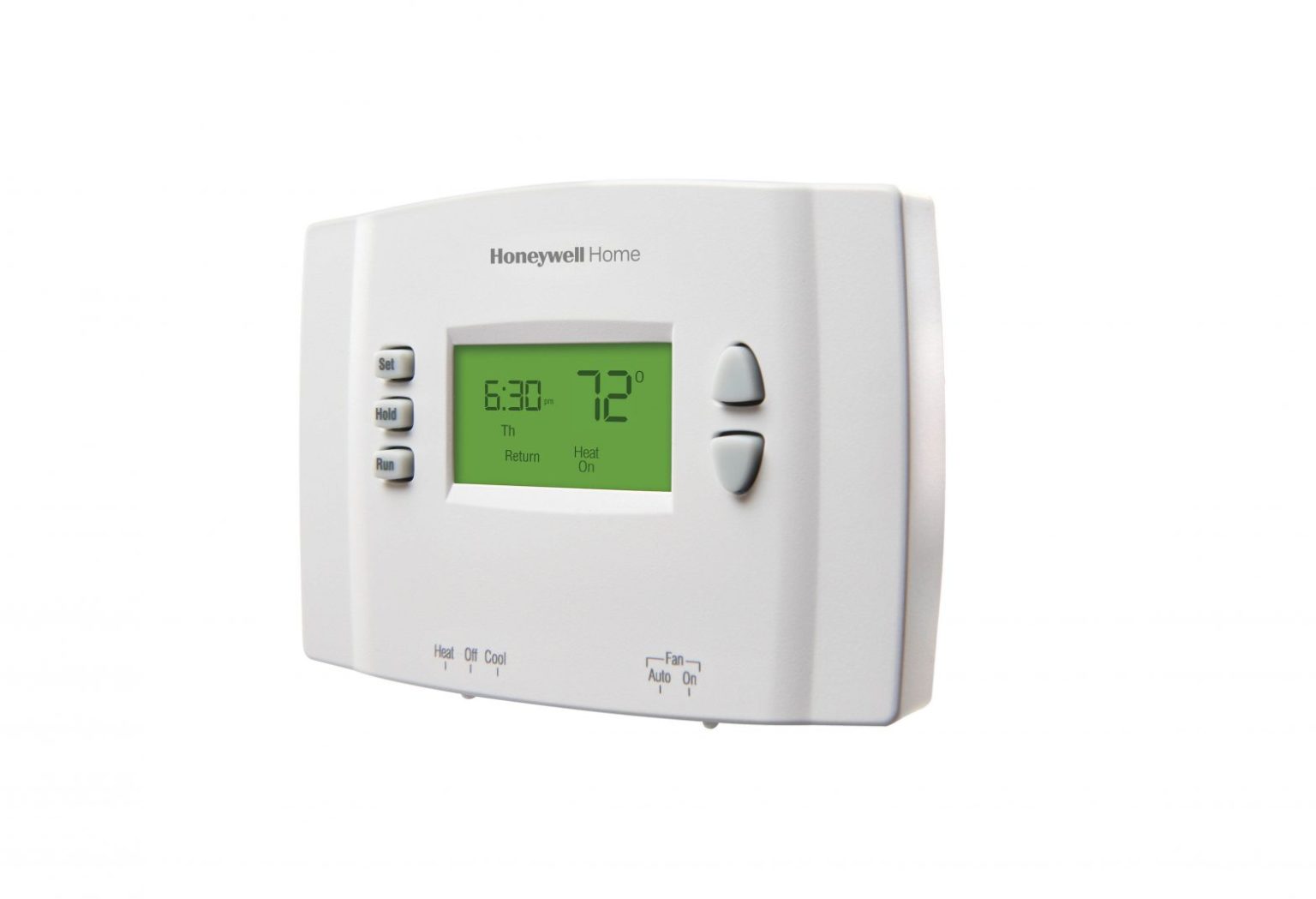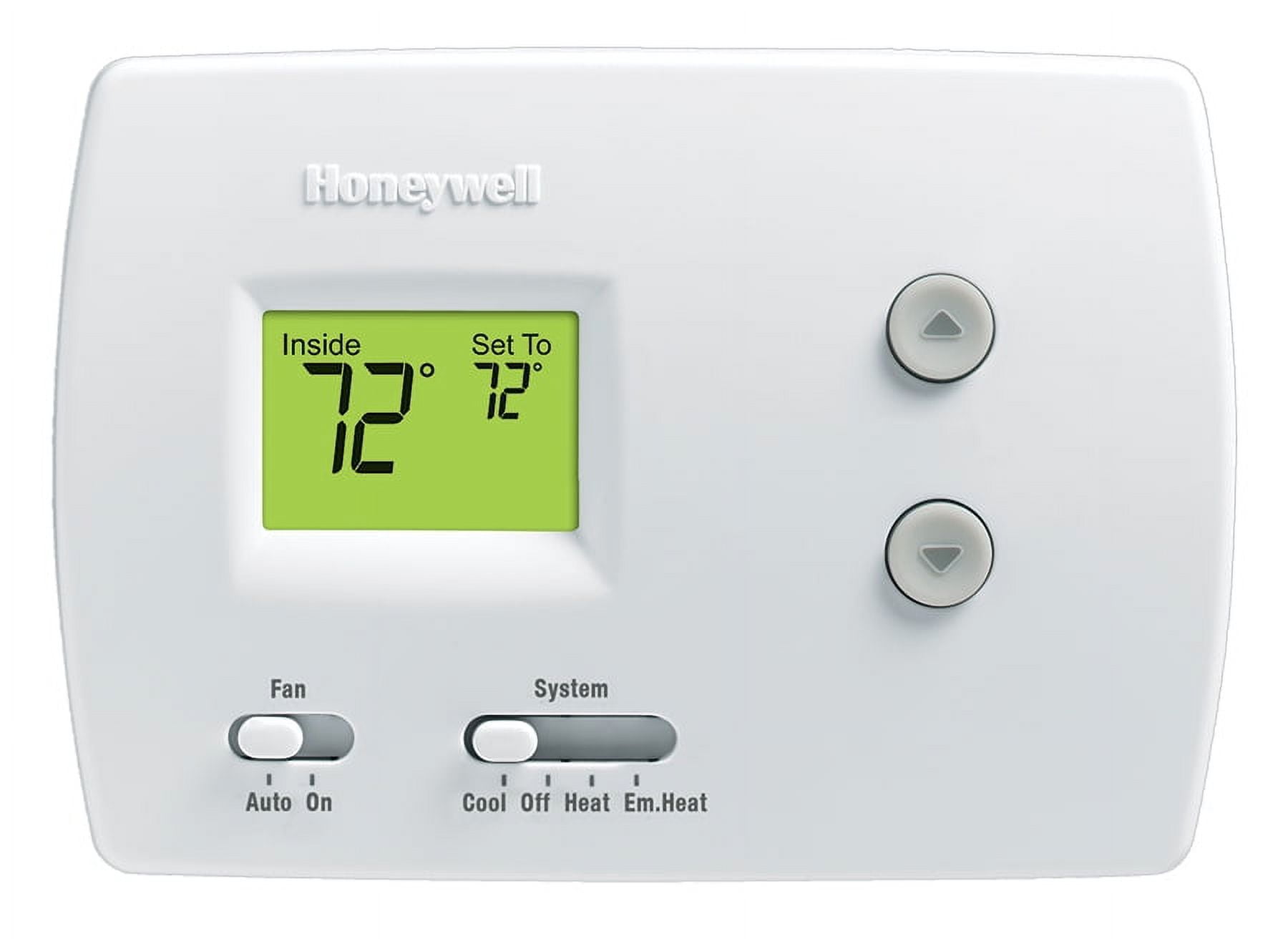Honeywell Thermostat Gas Or Electric Switch

Homeowners and businesses alike are increasingly focused on reducing energy consumption and lowering utility bills. One often-overlooked aspect of HVAC systems is the correct configuration of the gas or electric switch on your thermostat, particularly when upgrading to a new, energy-efficient model like a Honeywell Thermostat. Incorrect settings can lead to inefficient heating and cooling, negating any potential energy savings from a modern thermostat or a high-efficiency furnace or heat pump. This article will delve into the importance of this switch, how to identify the correct setting for your system, and the potential cost savings achievable through proper configuration.
Understanding the Gas/Electric Switch: The Key to Thermostat Accuracy
The gas/electric (or fossil fuel/heat pump) switch on a thermostat is a crucial setting that tells the thermostat what type of heating system it's controlling. It primarily dictates how the thermostat manages the auxiliary heat. Its main job is to manage the *auxiliary heat* when it needs to be used during the HVAC cycle.
Gas Furnace: If you have a gas furnace, the switch should be set to "Gas" or "Fossil Fuel." In this mode, the thermostat will bring on the furnace to provide heat. Auxiliary heat is not necessary in this case.
Electric Heat Pump: If you have a heat pump, the switch needs to be set to "Electric" or "Heat Pump." Heat pumps are generally cheaper than gas furnaces, as they produce less gas fumes into the atmosphere.
Why is this important? Setting the switch incorrectly can result in:
- Inefficient Heating: An electric heat pump may not activate its auxiliary heating (electric resistance heat) when needed, resulting in insufficient heating and higher energy consumption as the system struggles to reach the set temperature.
- Damage to Equipment: While less common, incorrect settings can potentially strain components of the HVAC system over time.
- Higher Energy Bills: The system is forced to work harder and longer to maintain a comfortable temperature.
Identifying Your Heating System Type
Before adjusting the gas/electric switch on your Honeywell Thermostat, it's crucial to identify your heating system type accurately. Here's how:
- Check Your Utility Bills: Look for charges related to natural gas or electricity. If you have gas bills, you likely have a gas furnace. If you only have electric bills, you might have electric resistance heating or a heat pump.
- Inspect Your Furnace/HVAC Unit: Locate your furnace or air handler (often in the basement, attic, or a utility closet). Look for a gas line connected to the unit. A heat pump will have an outdoor unit resembling an air conditioner.
- Check Your Home Inspection Report: If you recently purchased your home, the inspection report should specify the type of heating system.
- Consult an HVAC Professional: If you're unsure, a qualified HVAC technician can quickly identify your system type.
Locating and Adjusting the Gas/Electric Switch on Your Honeywell Thermostat
The location of the gas/electric switch on a Honeywell Thermostat varies depending on the model. Here's a general guide:
- Digital Thermostats: For many digital Honeywell Thermostat models, the switch is a software setting within the thermostat's menu. Consult your thermostat's user manual for specific instructions on accessing the settings menu and changing the gas/electric option.
- Older Thermostats (Mechanical): Some older models might have a physical switch located on the back of the thermostat faceplate or on the thermostat's base. You may need to gently detach the faceplate to access the switch.
Step-by-Step Instructions (General Guide):
- Turn Off Power: To avoid electrical shock, turn off the power to the thermostat at the circuit breaker.
- Remove the Thermostat Cover: Gently detach the thermostat cover. Consult your thermostat's manual for specific removal instructions.
- Locate the Gas/Electric Switch: Find the switch labeled "Gas/Elec," "Fossil Fuel/Heat Pump," or similar.
- Adjust the Switch: Set the switch to the correct position based on your heating system type (Gas or Electric/Heat Pump).
- Replace the Thermostat Cover: Carefully reattach the thermostat cover.
- Turn On Power: Restore power to the thermostat at the circuit breaker.
- Test the System: Set the thermostat to heat and verify that the heating system activates correctly.
Important Note: Always refer to your Honeywell Thermostat's user manual for specific instructions. If you're uncomfortable working with electrical components, consult a qualified HVAC technician.
Energy Savings and ROI: The Benefits of Proper Configuration
Properly configuring the gas/electric switch on your Honeywell Thermostat translates to significant energy savings and a positive return on investment (ROI). The amount of savings depends on factors such as your climate, heating system efficiency, and energy prices.
Data Points and Comparisons:
- Energy Star Estimates: According to Energy Star, properly programmed thermostats can save homeowners up to 10% on their heating and cooling bills annually.
- Heat Pump Efficiency: Setting the thermostat correctly ensures that the heat pump operates efficiently, using less energy to heat your home compared to relying solely on electric resistance heat.
- ROI on Smart Thermostats: Smart thermostats, like many Honeywell Thermostat models, offer advanced features such as programmable schedules, remote access, and energy usage tracking. These features can further enhance energy savings, resulting in a faster ROI. Studies have shown that smart thermostats can pay for themselves within one to two years through energy savings.
Example Scenario:
Imagine a homeowner with a heat pump system who incorrectly sets the gas/electric switch to "Gas." The thermostat might not activate the auxiliary heat when needed, causing the heat pump to run continuously at full capacity to compensate. This could result in a 20-30% increase in energy consumption during colder months, adding hundreds of dollars to their annual heating bill. Correcting the switch setting would ensure that the heat pump operates efficiently and utilizes auxiliary heat only when necessary, leading to substantial savings.
Rebates and Incentives for Energy-Efficient Thermostats
Many utility companies and government agencies offer rebates and incentives for installing energy-efficient thermostats, including smart Honeywell Thermostat models. These rebates can significantly reduce the upfront cost of upgrading to a more efficient thermostat, further improving the ROI.
How to Find Rebates:
- Check with Your Local Utility Company: Most utility companies have websites or customer service departments that provide information on available rebates and incentives for energy-efficient appliances and equipment.
- Search the DSIRE Database: The Database of State Incentives for Renewables & Efficiency (DSIRE) is a comprehensive online resource for information on state, local, federal, and utility incentives and policies that support renewable energy and energy efficiency.
- Consult with an HVAC Contractor: Many HVAC contractors are familiar with local rebate programs and can help you identify eligible thermostats.
Smart HVAC Integration: Maximizing Energy Efficiency with Honeywell Thermostats
Honeywell Thermostat smart HVAC systems offer a new level of energy efficiency and control. These systems can be integrated with other smart home devices and sensors, allowing for automated adjustments based on occupancy, weather conditions, and other factors.
Benefits of Smart HVAC Integration:
- Zoned Heating and Cooling: Smart thermostats can control dampers in your ductwork to create different temperature zones in your home. This allows you to heat or cool only the areas you're using, reducing energy waste.
- Remote Access and Control: Smart thermostats allow you to adjust the temperature from anywhere using a smartphone or tablet. This is particularly useful for adjusting the temperature before you arrive home or for monitoring energy usage while you're away.
- Learning Thermostats: Some smart thermostats, like certain Honeywell Thermostat models, learn your heating and cooling preferences and automatically adjust the temperature to optimize comfort and energy savings.
- Integration with Smart Home Platforms: Many smart thermostats can be integrated with popular smart home platforms like Amazon Alexa, Google Assistant, and Apple HomeKit, allowing you to control your HVAC system with voice commands.
- Predictive Maintenance: Some smart HVAC systems can monitor the performance of your equipment and alert you to potential problems before they become major issues. This can help prevent costly repairs and extend the lifespan of your HVAC system.
Choosing the Right Honeywell Thermostat for Your Needs
Honeywell Thermostat offers a wide range of thermostats to suit different needs and budgets. Here are some factors to consider when choosing a thermostat:
- Programmability: Do you need a programmable thermostat to set different temperatures for different times of the day?
- Smart Features: Do you want a smart thermostat with features like remote access, learning capabilities, and integration with smart home platforms?
- Display and User Interface: Do you prefer a simple, easy-to-read display or a more advanced touchscreen interface?
- Compatibility: Make sure the thermostat is compatible with your existing HVAC system.
- Budget: Thermostat prices can vary widely. Set a budget before you start shopping.
Conclusion: Optimize Your HVAC System for Maximum Savings
Correctly setting the gas/electric switch on your Honeywell Thermostat is a simple but crucial step in optimizing your HVAC system for maximum energy savings. By understanding your heating system type, locating and adjusting the switch, and taking advantage of rebates and smart HVAC integration, you can significantly reduce your energy bills and contribute to a more sustainable future. Remember to consult your thermostat's user manual or a qualified HVAC technician if you have any questions or concerns. Investing in an energy-efficient Honeywell Thermostat and ensuring its proper configuration is a smart investment that will pay off for years to come.










